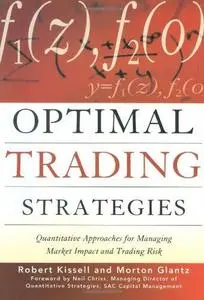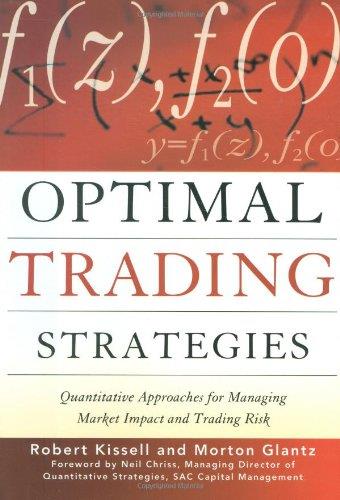Optimal trading strategies: quantitative approaches for managing market impact and trading risk By Robert Kissell, Morton Glantz
2003 | 399 Pages | ISBN: 0814407242 | DJVU | 4 MB
2003 | 399 Pages | ISBN: 0814407242 | DJVU | 4 MB
Everyday financial professionals are required to make important decisions regarding how best to execute an investment decision. The process entails estimating transaction costs, forecasting market impact and risk, evaluating alternative strategies, developing optimal trading strategies, choosing agency transaction or principal bid, and selecting the most suitable broker-dealer. Investors know all too well that trading too aggressively will cause too high market impact cost, but trading too passively will expose the fund to more risk, which may result in even higher costs. Investors need to find an appropriate balance between cost and risk, given the goals and objectives of the fund. Improper implementation will effectively erode much of the value added during the investment process and may ultimately cause investors to lose profits and funds to lose investors. How can you maximize value instead? The answer lies in the proactive management of transaction costs and selection of trading strategy, the process to which this book is dedicated. Optimal Trading Strategies presents well-developed methodologies for managing and reducing costs throughout all stages of the investment cycle. You will find: · Quantitative techniques for estimating, analyzing, and managing transaction costs · A framework for forecasting market impact and risk · Methodologies to develop optimal trading strategies · A process to achieve best execution · Metrics for measuring costs and evaluating performance Consider this: Two money managers invest in and hold identical portfolios but one manager consistently outperforms the other by as much as 50 to100 basis points per quarter. The more successful manager is inevitably the one who better manages trading costs. In a highly competitive environment where every basis point counts, it is critical to seize every foreseeable advantage for your investors. By using the framework and techniques presented in this book, you will better position yourself to achieve higher portfolio returns.



